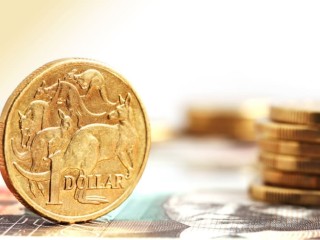 No one knows how long the Australian dollar will stay above parity with its US counterpart, but if the view of Australia’s chief commodity forecaster is on the money, exporters may have to get used to living with a strong Aussie dollar for several years to come.
No one knows how long the Australian dollar will stay above parity with its US counterpart, but if the view of Australia’s chief commodity forecaster is on the money, exporters may have to get used to living with a strong Aussie dollar for several years to come.
Australian Bureau of Agriculture and Resource Economics and Sciences executive director Paul Morris told an agribusiness lunch in Brisbane this week that a strong local economy is likely to see the Australian dollar remain at around parity levels with the US greenback for another five years.
It is a prospect that will do little to inspire confidence among our export dependent beef industry, which has been struggling to hold ground in key export markets since the Australian dollar nudged above parity in late 2010.
More than two years later, and with the exception of a few momentary dips below US$1 territory since – the last being in June 2012 – a strong Aussie dollar has become something of a routine fixture on the export landscape.
In the past year Australian exports to our biggest market by value, Japan, contracted by 10pc to 308,537 tonnes, while US exports in the same period increased by 9pc in 2012 to 131,921. While factors other than currency contribute to the export sales equation, the improved price-competitiveness of US product thanks to a higher $A is certainly making life more difficult for Australian beef exporters in important markets.
ABAREs chief Paul Morris told an agribusiness lunch hosted by the Committee for Economic Development of Australia on Wednesday that slow growth in other developed economies, and a relatively strong Australian economy was likely to contribute to ongoing strength in the $A for a number of years.
“We’re expecting that the Australian economy will remain relatively strong, and therefore the Australian dollar will remain around parity levels for the next five years,” Mr Morris said.
Mr Morris acknowledged that while a strong A$ helped to lower the price of imported inputs such as fertilisers and tractors, the hit to prices received by export-dependent farmers had resulted in declining terms of trade.
“So that means the pressure has been on in terms of need for continued productivity improvement,” Mr Morris said.
However other market observers believe the dollar's strength could run out of steam in the next couple of years.
Research by Bank of America Merrill Lynch predicts that Australia's resources boom could end with a bang in 2015-16, as several factors deter investment in more Australian mining projects, including inflated costs, the high dollar, increased regulation and increasing competition from the US shale gas.
Analysing the BOA Merril Lynch research, financial newsletter The Business Spectator writes that an abrupt end to the investment boom and the flows of foreign capital that have funded it could see the rug pulled out from under the value of the dollar (see Business Spectator article discussing BOA Merrill Lynch analysis here) at the same time.
Either way few analysts are predicting currency relief for Australian exporters any time soon.
ABARES expects growth in developed economies to average by 2pc per year over the medium term to 2018, and in developing economies to average around 6pc, led by China, over the same period.
With growth in developed countries relatively subdued, Mr Morris said forecast growth in developing countries will have to come from their own internal demand.
While that was happening, countries other than Australia were also seeking to take advantage of the same opportunties to supply that demand.
On the supply front, the export market was seeing strong growth in lower priced product from India and Brazil.
While both countries had disease issues which prevented them from competing with Australian beef in key markets such as Japan, South Korea and the US, they were able to compete across a number of other markets, such as the Middle East, Vietnam, Malaysia, and the Philippines.
“Some of those key ASEAN markets and the Middle East are where we are finding pressure is quite strong to those countries and will continue going forward,” Mr Morris said.
“Some of those producers are quite low cost producers compared to Australia and increasingly, Australia is becoming a high cost producer of agricultural product.”
Mr Morris said a key question for the beef industry as it looked forward to 2050 was whether it could compete in commodity markets with countries like India or Brazil, or whether it needed to be looking at higher valued products to meet demand.



HAVE YOUR SAY